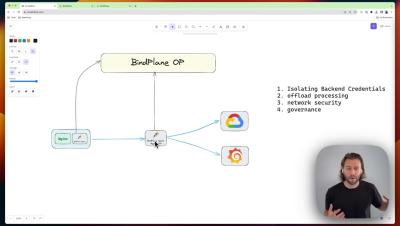Operations | Monitoring | ITSM | DevOps | Cloud
Logging
The latest News and Information on Log Management, Log Analytics and related technologies.
The Top 10 OpenSearch Plugins
OpenSearch is a powerful, open-source analytics and search engine that can be utilized to construct custom search solutions for a broad variety of applications, from websites to enterprise-level systems. It enables flexible search and indexing abilities, making it suitable for a range of uses, a great example of this is scalability. OpenSearch is designed for horizontal scalability, enabling organizations to input additional nodes to their cluster as data volumes and query loads increase.
Triangulate: Add Logs to Your Monitoring Mix
For many IT organizations, triaging or troubleshooting starts with assessing symptoms. As practitioners investigate the causal factors by answering each of the “5 whys,” logs are often where the actual root cause answers lie. This is even more true for issues related to configuration changes, change management, and security. However, diving into log data can be overwhelming as a first step due to the high volume and velocity of logs and missing context.
How to deploy a Hello World web app with Elastic Observability on AWS App Runner
Elastic Observability is the premiere tool to provide visibility into web apps running in your environment. AWS App Runner is the serverless platform of choice to run your web apps that need to scale up and down massively to meet demand or minimize costs. Elastic Observability combined with AWS App Runner is the perfect solution for developers to deploy web apps that are auto-scaled with fully observable operations, in a way that’s straightforward to implement and manage.
When and How to Use Aggregators
Golang Logging Libraries in 2023
3 Ways FinTechs Can Improve Cloud Observability at Scale
Financial technology (FinTech) companies today are shaping how consumers will save, spend, invest, and borrow in the economy of the future. But with that innovation comes a critical need for scalable cloud observability solutions that can support FinTech application performance, security, and compliance objectives through periods of exponential customer growth. In this blog, we explore why cloud observability is becoming increasingly vital for FinTech companies and three ways that FinTechs can improve cloud observability at scale.
How to Reduce Continuous Monitoring Costs
Observability Pillars: Exploring Logs, Metrics and Traces
Customize your data ingestion with Elastic input packages
Elastic® has enabled the collection, transformation, and analysis of data flowing between the external data sources and Elastic Observability Solution through integrations. Integration packages achieve this by encapsulating several components, including agent configuration, inputs for data collection, and assets like ingest pipelines, data streams, index templates, and visualizations. The breadth of these assets supported in the Elastic Stack increases day by day.











